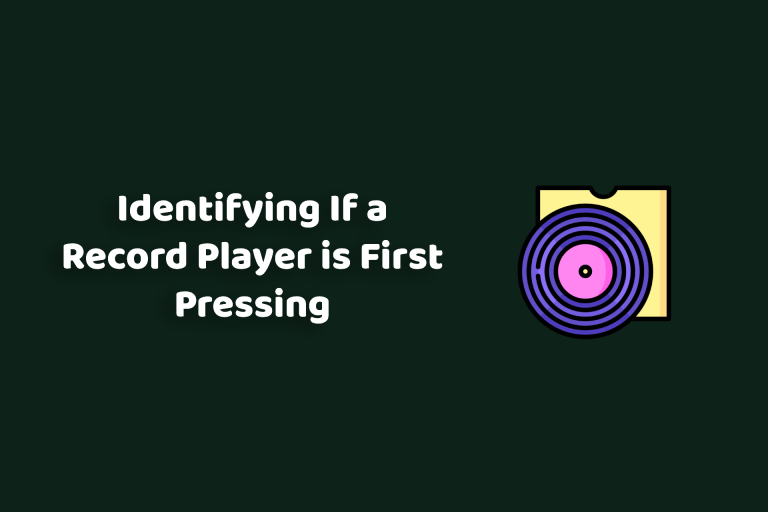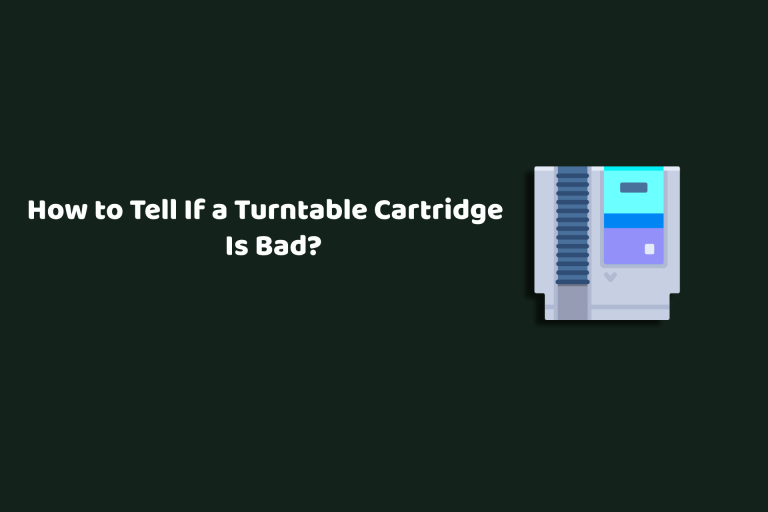How to Flatten Vinyl Records?
Warped records can be a major disappointment for vinyl enthusiasts. They affect the quality of vinyl playback and can even damage your needle.
Over time, this not only messes up your listening experience but can also turn into costly repairs for your equipment.
Personally, I began noticing that one out of every five or six records I ordered online would arrive warped. This issue reached a tipping point when I received a rare record that was so warped it caused noticeable static and playback issues.
That’s when I knew I needed a solution and discovered about flattening vinyl records.
To be honest, flattening a vinyl record is also a delicate process that requires attention to detail to avoid damaging the record.
So, in this post, I’ll share everything I know about flattening records, discuss methods that work and potential risks, and even offer advice on when to leave your records as they are.
Let’s get started!
What Are Warped Vinyl Records?
Warping, in simple words, refers to a situation when your vinyl record doesn’t lie flat, causing it to play improperly or, even worse, not play at all.
Warped records are generally of two types:
- Edge Warps: These are sharp, pronounced warps typically found at the edges of records. Unfortunately, they are often severe, though you may still be able to play the record without it skipping.
- Dish Warps (or Storage Warps): These occur when a record takes on an overall curved shape, like a shallow bowl. Fortunately, dish warps are usually fixable with the right technique.
What Causes Warped Vinyl Records?
Warping can occur due to various reasons, including:
- Heat Exposure – Vinyl records are sensitive to heat. High temperatures can soften the polyvinyl chloride (PVC) vinyl material, leading to warping.
- Pressure – Placing heavy objects on top of vinyl records or stacking them in piles can cause them to warp over time.
- Humidity – High humidity can cause vinyl records to swell and warp, while low humidity can make them brittle and more prone to damage.
Common DIY Methods for Flattening Vinyl Records
After realising that the warp was irreversible, I tried several methods to flatten the record. Here are they:
1. The Glass Sandwich Method
This method uses two pieces of glass and some gentle heat to coax your vinyl back into shape.
For glass sandwich method, you need the following:
- Two glass plates (larger than the record)
- Thick cardboard pieces
- Paper sleeve (no plastic)
Here’s what you need to do:
- Prepare Glass Plates: Obtain two glass plates that are larger than the diameter of your record. These can be glass chopping boards or custom-cut pieces from a glazier.
- Setup Oven: Preheat your oven to a safe temperature of 60-65 degrees Celsius. Avoid higher temperatures to prevent melting or deforming the vinyl.
- Heat Glass Plates: Place the glass plates in the oven and leave them until they reach the desired temperature.
- Assemble Initial Layers:
- Place one heated glass plate on a flat surface.
- Lay a piece of thick cardboard on the glass plate.
- Insert the warped record into a paper sleeve and place it on the cardboard.
- Cover the record with another piece of cardboard.
- Top with Second Glass Plate: Place the second heated glass plate on top of the upper cardboard layer.
- Allow to Cool: Let the entire setup cool completely. This gradual cooling helps the vinyl reshape without stressing the material.
2. The Heavy Book Method
This method involves using weight to slowly but surely press your vinyl back into shape. It’s gentle and doesn’t involve heat, which makes it a great option if you’re nervous about using an oven.
What You’ll Need:
- Two heavy books (the heavier, the better)
- A flat, stable surface
Steps to perform the process:
- Preparation: Find a flat, stable surface where your record can lie flat and undisturbed. This could be a table or a portion of your floor that doesn’t get much foot traffic.
- Cleaning the Record: Before starting, ensure your record is clean. Any dirt or debris could get pressed into the vinyl and cause more harm than good.
- Apply the Books: Carefully place one heavy book on each side of the record. The idea is to distribute the weight evenly across the surface of the vinyl. Avoid stacking the books directly in the centre, which can cause an uneven press.
- Wait: Now, the patience part—leave the books on for at least 24 hours. Sometimes, depending on the severity of the warp, it might take longer. Check periodically, but give it time to do its work.
3. The Vinyl Flat Tool
Vinyl Flat is a specialised tool designed to fix warped vinyl records. The core of the Vinyl Flat is made of cast iron, which gives it a heavy, solid feel.
The design includes two pieces of felt that sandwich the record, with cast iron plates on either side to apply even pressure during the process.
Using Vinyl Flat: Step-by-Step
- Building the Vinyl Sandwich: Start by placing your record between the two pieces of felt and sandwiching it between the cast iron plates. A washer is included to help add compression. Once assembled, the mechanism is tightened to create firm pressure on the record.
- Applying Heat with the Groovy Pouch: Vinyl Flat offers an additional product called the Groovy Pouch, which is a heating pad specifically designed to work with the Vinyl Flat. The Groovy Pouch allows you to apply heat to the warped record, softening it just enough to reshape it without damaging it.
- Temperature Control: The ideal temperature for reshaping vinyl is between 130°F and 150°F. To help you control the heat, Vinyl Flat provides a digital thermometer. During my testing, I found that I needed to use the highest setting on the Groovy Pouch to reach the correct temperature.
Once the Vinyl Flat is set up and the Groovy Pouch is heating, I recommend leaving the record inside for around two hours. This has worked for me in most cases.
Record Flattening Machines: The Best Professional Solution
Even after following the above methods, you can rely on a professional record-flattening machine if your vinyl records are still warped. Here’s why these machines are superior to DIY methods:
- Regulated Heat: A professional machine carefully controls the heat and pressure applied to the record. It slowly warms up the vinyl over an hour and a half, then cools it down just as slowly.
- Success Rate: In my experience, machines have a high success rate, especially when dealing with dish warps. I’ve had great results with my machine, which I’ll show you later in this post.
The Record Flattener in Action: Step-by-Step
Let’s take a closer look at how a professional record flattener works:
- Load the Record: Place the record inside the flattener and clamp it down. The machine is designed to apply even pressure across the record.
- Set the Time and Temperature: Depending on the severity of the warp, you can set the machine to heat for up to 120 minutes. Once the heating process is complete, the record will cool for another 120 minutes.
- Final Results: After cooling, the record should come out flat. If it’s not fully flattened, you can run the record through another cycle, though this isn’t always necessary.
Safety Tips for Flattening Records at Home
To avoid future warps:
- Store records vertically in a cool, dry place.
- Avoid exposure to direct sunlight or heat sources.
- Use inner sleeves and outer jackets to protect your records.
What To Expect With Flattening Vinyl Records: Success Rates and Failures
Flattening records is never a guaranteed process, even with professional machines. While dish warps typically come out perfectly flat, edge warps are much more challenging.
The grooves may be permanently damaged, and the record may still have a slight warp or audible noise in some cases.
Flattening Records—Is It Worth the Risk?
Flattening records can restore them to playable condition, but it’s not without risks. Whether you choose a professional machine or a DIY method, always proceed cautiously.
With the methods I have discussed in the article, you can bring your vinyl back to life and ensure optimal playback quality.
If you are really serious about flattening records, investing in a high-quality machine can be worthwhile, especially if you have a large collection.
Also, sometimes, the best course of action is to replace it.
Frequently Asked Questions
When to Leave a Record Alone?
If a warped record plays without skipping and doesn’t affect your needle, leave it alone. Most warps are only visual imperfections and won’t affect the sound quality enough to justify the risk of flattening.
Is there a Risk in Flattening Warped Records?
Anytime heat is applied to a record, you’re taking a risk. Different types of vinyl react differently to heat, and if too much heat is applied for too long, it can permanently damage the record’s grooves, resulting in unwanted noise or skips.
How do you identify if your record is warped?
To identify if your record is warped, hold it at eye level and look for uneven surfaces or bends. You can also place it on a flat surface like a turntable—if you notice gaps between the record and the surface, it’s likely warped.
Are vinyl records supposed to be perfectly flat?
Vinyl records aren’t always perfectly flat, and minor warps are common. However, as long as the warp doesn’t affect playback, it’s usually not a problem. Severe warping, though, can cause skips and damage your needle.






